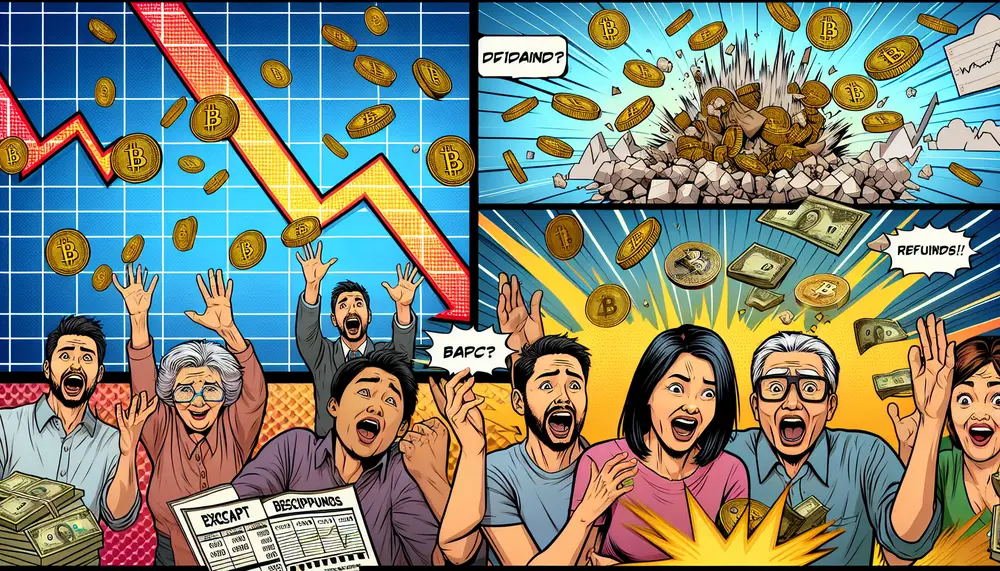
The article explains the key factors influencing Bitcoin's value, such as market demand and supply, regulatory environment, technological developments, market sentiment, global economic conditions, and historical trends. Understanding these elements can help investors make informed decisions in the volatile cryptocurrency...

The cryptocurrency market is experiencing a positive trend with Bitcoin rebounding to $27,000 and altcoins like XDC Network, Stellar, Hedera, Ethereum, Solana, and XRP seeing significant gains ahead of the U.S. CPI data release. Despite this optimism driven by better-than-expected...

The Federal Reserve's anticipated rate cut could boost Bitcoin and other cryptocurrencies, though its impact may be tempered by prior market expectations; meanwhile, increased institutional involvement is expected under a pro-crypto administration....

The article discusses Donald Trump's shift from being a Bitcoin skeptic to supporting cryptocurrency, influencing market optimism and price surges, while also highlighting Fidelity's prediction that nations not investing in Bitcoin by 2025 could face economic risks. Additionally, it covers...

The article discusses how Federal Reserve decisions, strong U.S. economic data, and inflation concerns could impact cryptocurrency prices by 2025, with potential interest rate hikes reducing their appeal compared to stable investments. Additionally, significant market events like Bitcoin's price drop...

Analysts predict a Federal Reserve crisis could boost bitcoin prices as investors seek alternatives amid economic instability, while experts foresee significant cryptocurrency gains by 2025 due to favorable regulatory changes....

Despite Genesis's bankruptcy, 232,000 customers received over $2 billion in cryptocurrencies at current values. Bitcoin is poised for new highs with SEC approval of an Ethereum ETF and companies like Semler Scientific adopting it as a reserve currency....

The cryptocurrency market is on edge as an HBO documentary may reveal Bitcoin's creator, potentially causing volatility if Satoshi Nakamoto moves his holdings; meanwhile, the crypto industry invests heavily in U.S. elections to influence favorable regulations....

The article discusses Bitcoin's recent price drop and outlines reasons for a potential recovery, including historical rebound patterns, institutional interest from 'whales' like MicroStrategy, and bullish technical analysis suggesting targets up to $122,000....

Elon Musk's name change on X led to a 2,000% surge in a Bitcoin rival's price, highlighting his influence over crypto markets; meanwhile, predictions for 2025 suggest significant growth and volatility with Bitcoin potentially reaching $200k and Ethereum hitting $8k....

Predictions suggest Bitcoin could reach $200,000 by 2025 due to factors like ETFs and AI advancements, while Trump's crypto strategy faces criticism for potential instability....

The cryptocurrency landscape in 2025 is expected to be shaped by Regenerative Finance projects and Central Bank Digital Currencies, with Solana potentially challenging Ethereum due to lower fees. Meanwhile, Bitcoin's market dynamics may face volatility despite MicroStrategy's significant investments, while...

Robert Kiyosaki predicts Bitcoin could reach $350,000 by 2025 due to factors like spot ETFs and mining reward halving, though some analysts urge caution. Meanwhile, Russia bans bitcoin mining over energy concerns; Stanford researchers propose a sustainable mobile-based mining method;...

Kraken plans to expand its token listings amid growing crypto optimism, despite legal challenges from the SEC, while TYMIO's founder predicts Bitcoin could reach $180K by late 2025 due to increased interest and supply scarcity....

Bitcoin experienced significant volatility with a sharp value drop due to Federal Reserve warnings and BlackRock news, but rebounded near $100,000 amid optimism for future interest rate cuts; Cathie Wood predicts Bitcoin could reach over $1 million by 2030....















